new posts in all blogs
Viewing: Blog Posts Tagged with: 2006, Most Recent at Top [Help]
Results 1 - 25 of 41
How to use this Page
You are viewing the most recent posts tagged with the words: 2006 in the JacketFlap blog reader. What is a tag? Think of a tag as a keyword or category label. Tags can both help you find posts on JacketFlap.com as well as provide an easy way for you to "remember" and classify posts for later recall. Try adding a tag yourself by clicking "Add a tag" below a post's header. Scroll down through the list of Recent Posts in the left column and click on a post title that sounds interesting. You can view all posts from a specific blog by clicking the Blog name in the right column, or you can click a 'More Posts from this Blog' link in any individual post.

By:
Becky Laney,
on 7/17/2016
Blog:
Becky's Book Reviews
(
Login to Add to MyJacketFlap)
JacketFlap tags:
2006,
YA Fiction,
YA Romance,
Houghton Mifflin Harcourt,
MG Fiction,
review copy,
YA Historical,
mg historical,
books reviewed in 2016,
mg romance,
Add a tag
Cyrano. Geraldine McCaughrean. 2006. HMH. 128 pages. [Source: Review copy]
First sentence: The curtain goes up. Silence falls. A painted moon wavers on a painted backdrop. The audience shivers with delight. For what could be better than an evening at a Paris theatre? Who more famous than the evening's glittering star? Enter the magnificent Montfleury, stage right!
Premise/plot: A prose adaptation--for teens--of the French play Cyrano de Bergerac written by British author Geraldine McCaughrean. Now, I do love the play. And I'd probably recommend the play over this adaptation--at least for adults. Especially since I believe it is now out of print. It is sad, right, that by the time I got to this review copy it was already out of print?!
Here's the basic story for those who don't know it: Cyrano is in love with his cousin, Roxane. He finds her to be the most beautiful woman in the world. Roxane is in love with a young soldier (cadet) named Christian. She thinks he is the most handsome man in the world. Christian loves Roxane, but, he lacks the skill to woo her the way she wants to be wooed. She's not interested so much in his kisses as his passionate words of longing. Cyrano who is just as skilled in wordplay as in swordplay steps in to help where he can. He'll give Christian the words to speak to win her heart. When both men go off to war it is Cyrano who risks his life--twice daily--to send letters to her so she won't worry that Christian has been killed. Those letters bring her great joy and drive her mad with wanting him....so much so that she goes into a war zone to find her man. When the two meet she declares, IT IS YOUR SOUL I LOVE, YOU COULD BE THE UGLIEST MAN ALIVE AND I WOULD LOVE YOU STILL, PERHAPS EVEN MORE. Now Christian begs her, PLEASE, PLEASE, PLEASE LOVE ME BECAUSE I'M BEAUTIFUL AND HANDSOME AND SWOON-WORTHY. THAT'S THE WAY I WANT TO BE WANTED. She's confused. But reader's aren't. Christian knows that it is Cyrano whom she truly loves because Cyrano is "his soul." What's to be done?!?!
My thoughts: For readers who are really intimidated by reading plays, then this one is worth seeking out. I do think it serves as a good first introduction to the story. I would hope that readers would grow into the original and seek to experience the story again and again.
© 2016 Becky Laney of
Becky's Book Reviews
Life As We Knew It. Susan Beth Pfeffer. 2006. Houghton Mifflin Harcourt. 352 pages. [9 hours, read by Emily Bauer] [Source: Review copy]
Lisa is pregnant. In an effort to be more well-rounded, I decided to listen to an audio book or two this summer. And since I prefer to listen to only books I've already read and loved, I decided to go with Life As We Knew It by Susan Beth Pfeffer. (This was my second time to listen to the story.)
Premise/plot: Miranda gives readers a behind-the-scenes look at a cataclysmic event that changes life on earth forever when a meteor crashes into the moon changing its orbit and proximity to earth. The book is Miranda's diary, and through her entries we meet her mom (Laura), older brother (Matt), younger brother (Jon), father, stepmother (Lisa), her mother's boyfriend (Peter), and a handful of her friends and classmates (Dan, Megan, Samantha). It reveals one family's struggle to just survive.
This won't be a proper review really. More a rambling list of observations.
From the very first time I read this one, I've really, really, really, really WANTED it turned into a video game.
Miranda and her family don't mention music much at all. But I personally would GO INSANE if I couldn't listen to music. If there was a video game, I'd want the family I create to have at least one musician in it (piano, acoustic guitar, violin, etc.) so that music could be made even without electricity.
Even after having read it so many times (probably six or seven???) I am still bothered by the inaccuracy about the water supply. Miranda makes such a deal of being on well water and their well running dry halfway through the novel. Remember that they've been without electricity for most of the book. (Except for when it comes on in fits and bursts allowing Miranda to vacuum and her mother to do laundry.) Wells don't pump water without electricity. The family would have had to find an alternate source of water practically from the very beginning of the novel. And being without water that much sooner would have complicated all aspects of their lives. (Their main source of water after the well goes dry is to melt snow and ice and boil it for purity.)
The diary gives Miranda an opportunity to vent. Let's be honest, in her situation, we'd all need a safe place to VENT. Miranda records her many heated arguments with her Mom. She doesn't come out looking like a saint. But I'm not sure she's meant to. As an adult reader probably a lot closer to her mom's age than Miranda's 16, it is easy to form judgments about Miranda.
Miranda is VERY opinionated about Christianity. The book is not faith-friendly. And really in the book's three-hundred-something pages, the only villains (except for some street thugs stealing plywood) are Megan's minister, and the President of the United States (who can't magically make things better for every human on the planet). Miranda and her mom are definitely opinionated in terms of politics as well. (Let's just safely guess that the author was not a Bush fan.)
I do think that a cataclysmic event like this would make everyone--no matter their age--contemplate their own mortality and reflect at least a little on the big questions of life. What happens when I die? Is there a heaven? Is there a hell? How can I know that I will go to heaven? What can I do to be saved? What is heaven like? What is hell like? So the fact that Miranda and a few people in her life are talking about these things seems believable enough to me. And since Miranda does not come from a religious family, it makes sense that she'd be muddled about what Christianity is all about. It makes sense that she'd reflect the modern society of not really believing that there is such a thing as sin. And it also makes sense that she'd reflect society's misunderstanding of what the gospel actually is. I think we very much live in a time and place where even those who've been exposed here and there to "the church" in some form or another--even if only coming through talking vegetables--believe that you earn your way into heaven through good works. That Christianity as translated through our culture is DO THIS, THIS, THIS, THIS. DON'T EVEN THINK OF DOING THAT.
The gospel isn't about a long, rigid list of rules and laws to be kept. The gospel is saying here's the long list of rules [the Old Testament]. You haven't kept these rules and laws since the time they were given to you. You've never been able to manage keeping them. Ever. No matter how many times you try and fail and fail to try, you can't keep these rules. Stop struggling and striving and listen to the good news. For anyone who gives up the fight to be good enough on their own, to all who admit that they are unable and unwilling to keep the law, to all who are honest about their need for help...there's GREAT news. Someone came and perfectly kept the law on your behalf and in your place. Jesus. He DID it all for you. It is done. He lived the life you could never, ever, ever, hope to live. He died the death you deserved. Believe that He has done it all, that it is indeed finished, and eternal life is YOURS.
The gospel is not to be confused with the prosperity gospel. The gospel is not believe in Jesus and get that dream job you've always wanted! Believe in Jesus and be cured of cancer! Believe in Jesus and get that dream body! Believe in Jesus and you'll never need another alcoholic drink in your life. Believe in Jesus and your gambling addiction will be broken forever. Believe in Jesus and your marriage will be saved.
Speaking hypothetically, I think a cataclysmic event of this nature would perhaps bring out the best in true Christianity, perhaps driving a zealous revival and urgent evangelism, perhaps even street evangelism. But reveal all the flaws of the prosperity gospel. The prosperity gospel believes in the power of your words, and that you speak your own reality. That if bad things happen, that it is your fault.
According to Amazon, twenty mentions of the word "God," twenty mentions of the word "hell," sixteen mentions of the word "church," and fifteen mentions of the word "heaven."
I think it is important to remember that her use of religion in this book is for DRAMA and CONFLICT and TENSION. And it was not to be offensive or potentially offensive to a portion of her readers. Megan's pastor, in my humble opinion, falls shy of preaching the true gospel and is much closer to a false teacher.
© 2016 Becky Laney of
Becky's Book Reviews
The Log Cabin Wedding. Ellen Howard. 2006. Holiday House. 64 pages. [Source: Gift]
The Log Cabin Wedding was a pleasant discovery to me. I found the book among my mom's over thanksgiving weekend. It was a short read that felt so comfy-cozy right. It would pair quite well with Sarah, Plain and Tall.
Elvirey is the young heroine of this historical chapter book. Out of necessity, two families come together to harvest the crops on their farms. One family is a widow woman and her young family. The other, as you might have guessed, is a widower with a family of his own. Elvirey is the daughter of the widower, and, this let's-get-together-with-the-neighbors idea was her own. Unfortunately, Elvirey didn't foresee that the two might just fall for each other in the process! The last thing she wanted was a replacement for her mother...
I liked this one very much. I like that Widow Aiken, among other things, teaches Elvirey how to read.
This one is easy to recommend.
© 2016 Becky Laney of
Becky's Book Reviews

By:
Becky Laney,
on 10/27/2015
Blog:
Becky's Book Reviews
(
Login to Add to MyJacketFlap)
JacketFlap tags:
HarperCollins,
2006,
J Fiction,
J Fantasy,
Animal fantasy,
MG Fiction,
library book,
MG Fantasy,
books reviewed in 2015,
Add a tag
The Great American Mousical. Julie Andrews Edwards. 2006. HarperCollins. 160 pages. [Source: Library]
I really found The Great American Mousical to be charming and delightful in all the right ways. I'm not quite sure why I tend to like books starring talking mice, but I do, I really do. And if you do too, then this one is a must-read. It is set in New York, in a theatre, in an about-to-be-demolished theatre that has seen better days. The truth is, the mouse theatre hidden within the human theatre is probably in better shape. Readers meet dozens of characters, all of them involved in the theatre. After setting the scene, things really get started after the star of the show, Adelaide, is trapped in a mouse trap and is "kindly" disposed of by one of the human construction workers. (It could have been so much worse!)
Several things keep this story going: will the mice find a way to save the theatre? will they be able to go on with the show without their big star? will Adelaide, the star of the show, make it back to the theatre in time?
The book is a very satisfying, very quick read.
© 2015 Becky Laney of
Becky's Book Reviews
Winston the Book Wolf. Marni McGee. Illustrated by Ian Beck. 2006. Walker. 32 pages. [Source: Library]
I definitely enjoyed reading Marni McGee's Winston the Book Wolf. If you enjoy fairy tale twists OR books about books, then this is one to seek out. Winston the Wolf LOVES, LOVES, LOVES to eat words, all sorts of words. He is literally eating the words, thus one of perhaps many reasons why he is banned from the library. But someone has pity on Winston, a girl with a red hood, and shows Winston that there is a BETTER way to devour words: that way, of course, is by READING them. After Winston learns to read, he NEEDS the library; he needs more books, more stories, more words. But sadly, he is banned. Can he and his new friend find a way to sneak him into the library?!
This one is definitely worth reading and sharing.
The illustrations were a bit odd, I admit, but they mostly worked for me. Mainly because they definitely add to the story. Readers can spot, for example, three little pigs on nearly every spread. One thing I didn't quite get, however, was WHY the tables and chairs and such had to have faces.
First sentence: Winston the Wolf swished his tail as he ran past the burger stand. He did slow down to sniff, but he did not drool. Meaty treats were not what Winston had in mind. Winston wanted books, and he knew where to find them.
© 2015 Becky Laney of
Becky's Book Reviews

By:
Becky Laney,
on 3/11/2015
Blog:
Becky's Book Reviews
(
Login to Add to MyJacketFlap)
JacketFlap tags:
J Fiction,
World War II,
Jewish,
Roaring Book Press,
MG Fiction,
1940,
review copy,
books reviewed in 2015,
books reread in 2015,
friendship,
2006,
Holocaust,
Add a tag
Emil and Karl. Yankev Glatshteyn. Translated from the Yiddish by Jeffrey Shandler. 1940/2006. Roaring Book Press. 208 pages. [Source: Review copy]
I love the idea of loving Emil and Karl by Yankev Glatshteyn. Emil and Karl was written in 1940 in Yiddish. It is set in Austria. It is the first--or at least among the very first--book written for children about the persecution Jews were experiencing from the Nazis.
Emil and Karl have always, always been best friends. Emil's Jewish. Karl's the son of socialists. Both are "orphans" in a way because of the Nazis. The book opens with intensity: readers first glimpse of Karl is haunting. Karl's mother has been taken away by the Nazis. He's witnessed this: not only the arrest, but the beating too. He's alone in the apartment, feeling very alone, very frightened, very worried. For they told him they'd be back to take him too. He doesn't know what to do next, where to go, who to trust. He decides to run to Emil's house. Emil's world has also been devastated within the past day or two. His father was taken and killed. His mother is grieving and shattered.
Karl and Emil are very much on their own it seems. The two stick together no matter what. They'll face danger and be put into difficult situations time and time again. There are many scenes that stay with you.
But while I find the premise of this one fascinating, it isn't the absolute best book about the holocaust. It may be among the first, but, that doesn't make it among the best of the best. Worth reading? I think so if you already have an interest in the subject. But if you only read one book on the subject, I'd have to recommend you go with another book.
© 2015 Becky Laney of
Becky's Book Reviews
When Santa Fell To Earth. Cornelia Funke. Translated by Oliver Latsch. 1994/2006. Scholastic. 167 pages. [Source: Library]
I don't know what I was expecting exactly with Cornelia Funke's When Santa Fell to Earth. Was I disappointed with the reading experience? Not really. Funke's "Santa" may not have matched my expectations, but, once I got used to her take on "Santa" and his "elves," it worked fine for me. This book is certainly creative. It offers readers a) invisible reindeer, b) cursing elves, c) evil Nutcracker goons and d) chocolate santas. It is a very odd book in a way. Almost a Twilight Zone take on Christmas. (Especially about the BOOTS.)
The book begins with a failed escape of sorts. Niklas Goodfellow is a Santa on-the-run. He's been put on trial and unfairly sentenced. He isn't all on his own. There are a few elves and angels on his side in his caravan, a few who still "get" what Christmas is all about. But it's a dangerous time for them all. They may have initially escaped, but, they have crashed. They landed in small neighborhood. They may eventually get away BEFORE they're discovered, but, every day they remain, every day it takes to repair things increases the risk.
Charlotte and Ben are the kid heroes of When Santa Fell To Earth. They are the two that interact with Niklas Goodfellow and his angels and elves. They are the two that find the naughty reindeer, Twinklestar. They are the two that fight alongside Santa and his elves against the oh-so-evil Gerold Geronimus Goblynch.
The book is certainly interesting and entertaining. But it's also ODD.
© 2014 Becky Laney of
Becky's Book Reviews

By:
Becky Laney,
on 8/8/2014
Blog:
Becky's Book Reviews
(
Login to Add to MyJacketFlap)
JacketFlap tags:
2006,
J Fiction,
J Fantasy,
Candlewick,
MG Fiction,
MG Fantasy,
book I bought,
books reviewed in 2014,
books reread in 2014,
Add a tag
The Miraculous Journey of Edward Tulane. Kate DiCamillo. 2006. Candlewick. 200 pages. [Source: Bought]
I enjoyed rereading The Miraculous Journey of Edward Tulane. I hadn't read it in years, and it was definitely time to read it again. Edward Tulane, the "hero" of the novel is a porcelain rabbit. He is the prized possession of a little girl, a spoiled little girl, named Abilene. Though between Abilene and Edward Tulane, it is Edward with the biggest ego. He is a very conceited toy. Abilene's grandmother feels this somehow. That Edward does not love anyone or anything but himself. That Edward hasn't a clue what love is. During the novel, Edward will learn at high cost what love is all about. He won't do it as Edward though.
Edward Tulane goes on a vacation with Abilene and her family. Abilene is being teased by some bullies on the ship. Her precious Edward Tulane is grabbed up and tossed about and in fact tossed overboard. Edward Tulane is later fished out of the sea, but, his life has taken a different path. He's got new owners. These new owners will be the first in a long line of new owners.
With each new owner, with each new phase in his life, Edward is renamed, almost reborn. It doesn't take long for him to become a very changed rabbit. He learns to listen. He learns to feel compassion or pity. He learns to feel fear and pain. And most importantly he learns to love, truly love.
Will his journey have a happy ending?!
I definitely enjoyed this one. It is very satisfying. It's an emotional journey that this little toy takes over several decades. While Edward Tulane may not have started out a likable protagonist in the beginning, by the end, it's hard not to love him.
© 2014 Becky Laney of
Becky's Book Reviews

 Haters by Alisa Valdes-Rodriguez was a rough, slow read for me. This is a boys-boys-I-like-cute-boys, shopping-and-clothes, and mean-girls book. That just is not a story situation that holds my attention. I had to start skimming the long paragraphs describing clothes and houses. Also a chapter on shopping and some dating sections. I am very aware, however, that there are many, many of these kinds of books in YA, meaning that there are plenty of people who do like reading them. Those readers may embrace Haters.
Haters by Alisa Valdes-Rodriguez was a rough, slow read for me. This is a boys-boys-I-like-cute-boys, shopping-and-clothes, and mean-girls book. That just is not a story situation that holds my attention. I had to start skimming the long paragraphs describing clothes and houses. Also a chapter on shopping and some dating sections. I am very aware, however, that there are many, many of these kinds of books in YA, meaning that there are plenty of people who do like reading them. Those readers may embrace Haters.
So Haters is a boys-boys-I-like-cute-boys, shopping-and-clothes, and mean-girls book with ethnic characters. It's also a kind of teenage fairy tale with all good things coming to main character Paski. A couple of interesting points:
In this LA world, beauty and money are great equalizers. Being Hispanic, Vietnamese, or any variation of African-American isn't an issue for people who are beautiful and rich. That's probably the case in real life.
In one of the magical realism episodes, Paski is visited in a vision by a child who will become the grandmother of her Japanese/African-American classmates/neighbors. This child has the knowledge of the adult she will become and of the world after she leaves it. She says something to the effect (and I'm paraphrasing here), I put in time in a Japanese internment camp as a child here in America so that my grandsons could be treated like crap when they get to high school not because they're Japanese but because they're chess geeks and just middle class? What the hell? With ya on that one, gram.
Here There Be Dragons. James A. Owen. 2006. Simon & Schuster. 326 pages.
I was a little nervous to reread Here There Be Dragons by James A. Owen. I remember just loving it when I read it the first time. Would I still enjoy it? Still find the characters enjoyable? The plot twists clever? I was not disappointed. In this first adventure, readers meet Jack, Charles, and John, the three caretakers of the Imaginarium Geographica. They meet Bert, a former caretaker as well. Readers are introduced to a few other key characters as well: Tummler, Aven, Bug, Samaranth, the Cartographer, the Winter King, Magwitch, etc. (Just to name a few.) Many stories, tales, and myths are hinted at in this one. But. Mainly this book serves as a fun introduction into a brand new fantasy series. Readers are introduced to the 'real' world (England 1917 or 1918) and the 'imaginary' world of the Archipelago of Dreams, a world where there are dragons and dragon ships, elves, trolls, and talking animals. Readers also learn about the Keep of Time, which is central to the series....
I loved this one! I thought the storytelling was great! Read Here There Be Dragons
- If you enjoy fantasy and/or mythology
- If you like dragons and other 'imaginary' creatures
- If you have enjoyed the works of C.S. Lewis, J.R.R. Tolkien, etc.
- If you love to read; this series draws richly from literature
© 2012 Becky Laney of
Becky's Book Reviews

By:
Becky Laney,
on 5/11/2012
Blog:
Becky's Book Reviews
(
Login to Add to MyJacketFlap)
JacketFlap tags:
war,
Historical Fiction,
adult fiction,
2006,
YA Fiction,
YA Historical Fiction,
World War II,
library book,
Books reviewed in 2012,
Add a tag
The Book Thief. Markus Zusak. 2006. Random House. 560 pages.
First the colors. Then the humans. That's usually how I see things. Or at least, how I try. Here is a small fact: you are going to die. I am in all truthfulness attempting to be cheerful about this whole topic, though most people find themselves hindered in believing me, no matter my protestations. Please, trust me. I most definitely can be cheerful. I can be amiable. Agreeable. Affable. And that's only the A's. Just don't ask me to be nice. Nice has nothing to do with me. The Book Thief leaves me speechless. If humans leave Death, the narrator, feeling haunted, I can say the same of the narrator. Could a book have a better narrator? I doubt it. There is something so perfectly-perfectly-perfect about The Book Thief. It is beautiful and brilliant; absorbing and compelling. It goes ugly places, to be sure, but the language, the style, just can't be beat. I mean this is a novel that wows and amazes. The characters are so real, so vivid. I mean these characters are ve...moreThe Book Thief leaves me speechless. If humans leave Death, the narrator, feeling haunted, I can say the same of the narrator. Could a book have a better narrator? I doubt it. There is something so perfectly-perfectly-perfect about The Book Thief. It is beautiful and brilliant; absorbing and compelling. It goes ugly places, to be sure, but the language, the style, just can't be beat. I mean this is a novel that wows and amazes. The characters are so real, so vivid. I mean these characters are very real, very human, very flawed, but the connection is so intense. I mean how can you read Liesel Meminger's story and not be moved? How can you not care for Liesel, for her new Papa and Mama, for Rudy, for Max? It would probably be hard to pick a favorite character in this one. Would it be Death who tells the story so beautifully, so achingly, so straight-forwardly? Would it be Liesel, the girl-turned-woman, whom you just can't help loving? Her story is so heartbreaking. She is weak-and-strong. She's vulnerable and spunky. I mean she's got fight to her, fight in her. And there's something about her that you just can't ignore. But she's been hurt, she's carrying pain and loss. There's so much about her that I couldn't even begin to put into words. Would it be Hans Hubermann? It may just be. The way he tenderly loves Liesel, the way he's strong and gentle with her. So very, very understanding. How she becomes his world. How he does everything possible to be a true father to her, to heal her hurts, to piece her heart back together. There is something so very practical and down-to-earth about him, yet something so sensitive too. I mean Hans Hubermann and his accordion won't soon be forgotten by anyone who reads this novel. And then there's Max, the hidden Jew in the basement. I love Max for himself, it's true, but I love Max for what he brings out in Hans and Liesel. I love Max's role in the novel because of how he is able to connect with Liesel, how he is able to connect with this family. His story is powerful, the "books" he writes for Liesel are incredibly compelling, but, this isn't his story. He's a big part of the story, to be sure, because of the way Liesel takes him into her heart. But. This story is all about Liesel. As it perhaps should be. The Book
Black Duck. Janet Taylor Lisle. 2006. Penguin. 252 pages.
A rumrunner had lived in town, one of the notorious outlaws who smuggled liquor during the days of Prohibition, that was the rumor. David Peterson heard he might still be around. Where? No one knew exactly. It was all so long ago. Well, who was he? This was equally vague. Someone said to ask at the general store across from the church. It would be a miracle if the man was still alive, David thought. He'd be over eighty. If he were anywhere, he'd probably be in a nursing home by now. But it turned out he wasn't. He still lived in town. Ruben Hart was his name. Yesterday, I reviewed
Bootleg: Murder, Moonshine, and the Lawless Years by Karen Blumenthal. Reading that fascinating nonfiction book on prohibition led me to indulge in a reread. Black Duck is a historical novel that I just LOVE!!! It is a novel with a framework structure.
Our young hero, David, wants to be a reporter or journalist. (He definitely does not want to limit himself to working for his father's landscaping/yard business.) He needs a good story, a BIG story. So he follows a lead and meets Ruben Hart. He's hoping to find out more about the Black Duck, a ship that was almost legendary--at least locally--during prohibition. It was one of many, many ships that carried bootleg liquor, landing and unloading secretly, of course. Throughout the novel there are newspapers clippings telling the fate of the Black Duck, of the three crew members who died that night it was apprehended by the Coast Guard. There were so many--especially when it first happened--that thought it was murder, that it was a set-up. That someone informed the Coast Guard telling them exactly, exactly where to find the Black Duck. That the Coast Guard shot without any warning, shot at an unarmed ship--or unarmed crew. David definitely feels there is a story to be told, to be uncovered. But will Ruben Hart share it with him?
Most of the novel is set in 1929 in a coastal Rhode Island town. Readers meet Ruben and his best friend Jeddy McKenzie on the day they discover a dead man on the beach. A well-dressed man that had been shot in the neck. They also discover a crate...among other things. They do report the discovery to the police--Jeddy's father is the Chief. But the police seem hesitant to investigate the crime. The boys aren't quite sure if this is the deputy's fault (Charlie Pope) or the Chief's fault. Or perhaps there is someone higher up who doesn't want this death, this murder, to become publicly known. The two are told to be quiet, to keep silent about what they saw. But some things can't be hushed up. The day becomes significant--at least in retrospect--because it was the day that Ruben first started keeping secrets from Jeddy, the day that Ruben first started doubting his friend's loyalty to him--to keeping secrets. Ruben starts to believe that Jeddy will report back to his father, to the police. So he chooses to keep what he's learned, what he's observed, to himself.
This is also a time when Ruben starts questioning everything, starts questioning what is right and what is wrong. If bootlegging is providing much-needed money to families, is it really that evil? These aren't criminals. These are hardworking men, of all ages, who have lived in poverty for so long, who have always struggled just to provide basic necessities for their families, so is it really that wrong for these men to help unload these illegal shipments? Isn't there a difference between murdering mobsters and the simple people caught up in this mess?
So Black Duck is the coming-of-age story of Ruben Hart AND it is the coming-of-age story of David Pe
Hattie Big Sky. Kirby Larson. 2006. Random House. 290 pages.
December 19, 1917Arlington, IowaDear Charlie,Miss Simpson starts every day with a reminder to pray for you--and all the other boys who enlisted. Well, I say we should pray for the Kaiser--he's going to need those prayers once he meets you!Oh, how I LOVE Hattie Big Sky. I just love and adore this historical YA novel set, for the most part, in 1918. The heroine, Hattie, has inherited her uncle's claim in Montana. If the claim is to become truly hers, she'll need to prove the claim. She'll need to plant/harvest a certain number of acres, and lay a certain number of fence/fence-posts. Intimidating work to be sure--physically and emotionally demanding work. True, she'll have almost all winter to prepare herself mentally and emotionally for the challenge--time well spent reading up on farming and such--but once spring comes, the work is neverending. Unfortunately, some people do have more time on their hands. Time to spend being too patriotic. Time to spend bullying your German neighbors. And believe me, it gets cruel and ugly and brutal. But Hattie is different from the rest--not that every single person is a hater. She knows that she wouldn't stand a chance of making it on her own without the friendship--deep friendship--with her closest neighbors. Yes, her neighbors are German. But never for a second has she felt they were her enemies, that they should be her enemies.
Read Hattie Big Sky
- If you like or love historical fiction; this one is a must in my opinion!
- If you love pioneer-type stories; yes, this one is set in 1918, but proving a claim and homesteading hadn't changed all that much
- If you like or love coming of age novels; Hattie is a great heroine, and she learns so much about herself during these tough months!
- If you like novels set during World War I
© 2012 Becky Laney of
Becky's Book Reviews
The Secret History of Tom Trueheart. Ian Beck. 2006. HarperCollins. 345 pages.
Once upon a time, long ago, near the Land of Stories, lived young Tom Trueheart. He was the youngest of the famous Trueheart family of adventurers. I liked this one. I even
really liked this one! I'm just not sure it's love for me.
Tom is the youngest in a long line of adventurers. All of his older brothers have already had plenty of adventures in the Land of Stories. All of his older brothers regularly are sent on missions by the Story Bureau. But for Tom, well, he's always the one left behind. True he isn't quite old enough, he hasn't had 'the birthday' yet. (I believe it's 12?) But his birthday is fast approaching. All of his brothers have promised--their mother--to be back in time for Tom's birthday. That will give them several weeks at least to finish the stories and report everything so that it can be written down and enjoyed by one and all. But Tom's birthday comes and goes, and there is still no word on his brothers. What could have kept them in their stories so long? Should they be worried?!
In this first adventure, Tom Trueheart receives his FIRST assignment. Enter the Land of Stories and find out what happened to his older brothers--I believe there are six brothers. It's not an easy mission, for something must be seriously wrong to keep all six brothers away from home so long. Does the Trueheart family have an enemy?!
As I said, I really really liked this one. I thought it was fun. Perhaps not quite as fun and clever as A Tale Dark and Grimm by Adam Gidwitz. Perhaps not quite as funny as the first few books in The Sisters Grimm series by Michael Buckley. But I think the book is a fun treat all the same.
© 2011 Becky Laney of
Becky's Book Reviews
Gideon The Catpurse. Linda Buckley-Archer. 2006. Simon & Schuster. 405 pages.
It was early morning on Saturday, the sixteenth of December, the first day of the Christmas holidays. I wanted to really love this one. I think I wanted to love it so much because the premise sounded so great. But, for me, it wasn't quite love. I definitely liked it. I am definitely glad I discovered this series. And I definitely want to continue on to see what happens next. But it's not love, not yet.
Our hero (Peter) and heroine (Kate)--two people who are practically strangers until IT happens--are forced to adapt--and adapt quickly--when the two are mysteriously thrown back in time, back to the eighteenth century.
They know their only hope of getting back to the twenty-first century, back to their own time, is if they work together to recover an antigravity machine or device. But this device has fallen into the hands of a villain, a man nicknamed Tar Man. But all hope is not lost, for they become very good friends with a man named Gideon. A man with a past, it's true, but his past may be the key they need to return to the future. For Gideon knows much about the Tar Man and the Tar Man's employer.
I liked the world Linda Buckley-Archer created. I liked many of the characters--especially Gideon. But it didn't quite work for me. At least not as much as I wanted--or needed--it to.
Have you read this one? What did you think?
© 2011 Becky Laney of
Becky's Book Reviews

For decades, feminist writers have speculated about what became of Cinderella after she married her prince. Her situation was perceived as being full of peril, and that was before anyone had heard of the late, lamented Diana, Princess of Wales. In Cinderella and the Mean Queen, part of the After Happily Ever After Series by Tony Bradman, she has trouble with her mother-in-law (Yikes! Diana!) and works things out by starting her own business doing cosmetic and clothing makeovers. The feminist in me thinks, How shallow to put so much focus on physical appearances. But the writer in me thinks that's very clever, since the fairy godmother, or whatever it was she was, did a makeover on Cinderella in the original fairy tale.
I also read Goldilocks and the Just Right Club, Mr. Wolf Bounces Back, and The Fairy Godmother Takes a Break. These books are meant to be instructive on many levels. They all have a reading level between grades two and four+, and they include a glossary, discussion questions, and writing prompts. And the basic stories themselves are probably a little improving.
But I'm not going to hold any of that against these books because they are actually entertaining reading and well written. It's not easy doing a coherent, well crafted story for early readers, and these books are that. And clever, too. Goldlilocks, for instance, vandalized the Three Bears' home because of problems at school. When her parents transfer to another one, who does she meet there but Baby Bear? And the Big Bad Wolf ends up with work problems because once he becomes a father, all the creatures he would normally be offing (the little pigs, Red Riding Hood) remind him of his darling offspring. He's good for nothing after that. (I read that one while reading Dust City, a YA book that also makes the Big Bad Wolf a father, but uses that idea very, very differently.)
I had a family member home who is a teacher working with children with reading problems. While she liked the book in this series that she read, she felt that in spite of the glossary, some of the vocabulary might still be a problem for her students. She pointed out the word "kettle," for instance, which she didn't believe her students would know and which doesn't appear in the glossary. However, teachers who work with struggling readers could use these books while providing support. Adults who are looking for books for very young children who are reading early but still have young interests should check them out, too.
By the way, every page has a black and white illustration by Sarah Warburton, so readers aren't overwhelmed by lots of text.
 By His Own Hand? The Mysterious Death of Meriwether Lewis. Edited by John D.W. Guice. Contributions by James J. Holmberg, John D.W. Guice, and Jay H. Buckley. Foreword by Elliott West. Introduction by Clay S. Jenkinson. 2006. University of Oklahoma Press. 208 pages.
By His Own Hand? The Mysterious Death of Meriwether Lewis. Edited by John D.W. Guice. Contributions by James J. Holmberg, John D.W. Guice, and Jay H. Buckley. Foreword by Elliott West. Introduction by Clay S. Jenkinson. 2006. University of Oklahoma Press. 208 pages.
From the foreword: In darker moments I sometimes wonder whether we require our most favored historical characters to die in particular ways.
From the preface: Late in the afternoon on 10 October 1809 one of the nation's great heroes reined his horse off the Natchez Trace to spend the night at Grinder's Stand. The rustic homestead consisted of two rough-hewn log cabins a few paces apart and a distant barn. It was a pleasant fall day some seventy miles southwest of Nashville, Tennessee. What occupied Meriwether Lewis's mind we will never know, but we do know that shortly after sunup the next morning he died there. Who held the weapon or weapons that fired the fatal shots during the night? Did Lewis take his own life or did an assassin? After nearly two centuries, this remains one of the most fascinating, puzzling, and enduring questions in all of American history.
I found By His Own Hand? a fascinating read, a true mystery.
In the first chapter, James J. Holmberg presents his case for suicide. He presents the facts of the case and argues that suicide is the most logical explanation, or the best educated guess for what happened that night. He examines several primary resources--letters, written accounts of oral testimonies or oral histories, etc. One of his main points is that Lewis' closest friends--those who knew him best, men like Thomas Jefferson and William Clark--believed that their friend took his own life. The information in the letters primarily comes from the account of Priscilla Grinder. Several men wrote letters recounting these events, but they got their story from talking to her. There were no other witnesses at the inn to verify what Priscilla Grinder heard or saw that night.
In the second chapter, John D.W. Guice presents his case for homicide. He goes over the facts yet again. He provides further context--in some areas--for readers. He argues that while it cannot be proven that it was not suicide, while it can not be thoroughly proven that it was in fact murder, enough questions remain that there is definitely reasonable doubt. Suicide may satisfy some, but for those historians on the other side, there are still so many unanswered questions that they can't just accept that it was suicide. They would need more facts, more answers. While the first chapter tried to argue that Lewis was in a bad state of mind, that he was depressed and suicidal and anxious, that he'd already tried and failed to commit suicide in the weeks leading up to his death, this second chapter tries to argue the opposite. They try to prove that while Lewis was human, while he had moments of doubts or anxieties, there were still plenty of indicators in his life to show that he had not given up, that he had every intention of living. And these rumors of previous suicide attempts are questionable. While one man writes of them, he does not give any clues at all as to the when or the where or the how. If he knew these attempts to be true, why not include at least some detail. If he really, truly thought this man was a danger to himself, why didn't he do something about it? And, of course, that is just one example. The chapter argues that the "witnesses" in the case are not infallible, and in some cases quite questionable. Priscilla Grinder's story changed, and changed quite a bit with each telling or retelling. And her story does not make that much sense even if she'd kept it the same. She claims that she heard two gunshots, when she went to inves

By:
Becky Laney,
on 4/26/2011
Blog:
Becky's Book Reviews
(
Login to Add to MyJacketFlap)
JacketFlap tags:
dystopia,
2004,
2006,
YA Mystery,
YA Fiction,
Survival,
library book,
Simon and Schuster,
YA Science Fiction,
YA Thriller,
YA Action,
cloning,
Add a tag
Sharp North. Patrick Cave. 2004/2006. Simon & Schuster. 528 pages.
The girl nearly didn't find out who she was. What she was. Sharp North is a perplexing YA novel. Part mystery. Part thriller. Part dystopian. It's set in a future world forever altered by global warming. A future world with a corrupt government. (How many fictional future worlds don't have a corrupt government?) A future world threatened by an underground movement, a revolution in the making. Our heroine, Mira, has a role to play in this world--for better or worse. And it's a role that mystifies Mira. For Mira's future is just as uncertain as her past.
Sharp North begins with a murder. Mira witnesses this murder, this hushed up murder, and it forever changes the way she sees the world, the way she sees her community. In part because she finds out that she is connected to the victim. She finds a piece of paper, a mere scrap, with a list of names. Her name is on the list. And so is the name of one of her friends, Gil Moore. He's listed as "her watcher." But why is he watching her? Is he her friend or her enemy? Is he out to see that she survives? Or is he in place to eliminate her? That's what Mira can't forget, can't erase. Are the people who murdered this mysterious woman, this mysterious stranger, out to get her? What led to this crime? For even if the whole world chooses to ignore it, Mira can't. Was it the woman's curiosity? Well, Mira can't help being curious now!
So Mira sets out on a journey to discover the truth, the truth about who she is, what she is. In a way she's running away from danger just as much as she's running straight into it. For Mira hasn't a real clue who her enemies are and who her friends may be. Is there a safe place for Mira? Or is she destined to upset the balance of those around her?
We meet a few interesting characters in Patrick Cave's Sharp North. Including several members of the Saint family, one of the "Great Families" that govern in this new world.
Maybe other readers can piece together this mystery. Maybe other readers can read it without being confused by the ending--as for me, well, I'm puzzled by how it ended. I still don't know what really happened.
So did I like it? Yes and no. I liked the idea of it. But. It felt like two or three stories pieced together. And it didn't always work for me.
© 2011 Becky Laney of
Becky's Book Reviews

By: Brimful Curiosities,
on 1/29/2011
Blog:
Brimful Curiosities
(
Login to Add to MyJacketFlap)
JacketFlap tags:
Carolrhoda Books,
Lerner Publishing,
Book crafts,
Food,
Holidays,
Book Review,
Picture Books,
2006,
Vehicles,
Valentine's Day,
Add a tag
While looking for cute Valentine's Day ideas I came across directions for a candy airplane valentine on the Family Fun website. I remember making similar airplanes when I was a kid and, if my memory serves me correctly, I believe that I first learned to make them in Girl Scouts.

The candy airplanes are made out of a roll of Smarties, a couple sticks of gum, and two Life-Saver candies for the wheels. A rubber band holds all the pieces of candy together to form an airplane. (Visit Family Fun for instructions on how to assemble.)
 I created and printed a special heart Valentine themed gum wrapper cover like the one shown on the Family Fun site to add to our airplanes (click on the image to see the jpg and print). I think the decorated wrapper helps the airplane look prettier for Valentine's Day. The airplane is a little tricky to assemble and is probably a project suited more for older kids, but my kids enjoyed watching me make them and they really, really had a blast playing with them! I think I'll make a few more so my son can give them to his friends for Valentine's Day.
I created and printed a special heart Valentine themed gum wrapper cover like the one shown on the Family Fun site to add to our airplanes (click on the image to see the jpg and print). I think the decorated wrapper helps the airplane look prettier for Valentine's Day. The airplane is a little tricky to assemble and is probably a project suited more for older kids, but my kids enjoyed watching me make them and they really, really had a blast playing with them! I think I'll make a few more so my son can give them to his friends for Valentine's Day.
Some of the variations of this craft show it with a little message on a banner attached to the back of the plane. Here are a few cute Valentine airplane themed sayings:
It's plane to see - I want you for my Valentine.
Up, up and away! Happy Valentine's Day!
Above all, I want you for My Valentine.
You're just plane cool!
Have a high flying Valentine's Day!
Love is in the air!
Valentine, my heart soars for you!
♥ ♥ ♥ ♥ ♥ ♥ ♥ ♥ ♥ ♥ ♥ ♥ ♥ ♥ ♥ ♥ ♥ ♥ ♥ ♥ ♥ ♥ ♥ ♥ ♥ ♥ ♥ ♥We started reading several Valentine's Day books last week. One of my daughter's favorite books from library included an illustration of the main character in an airplane spreading Valentine cheer. How fun is that?
 Love, Ruby Valentine
Love, Ruby Valentine
Everybody Kills Somebody Sometime. Robert J. Randisi. 2006. St. Martin's Press. 288 pages.
When I spotted Joey Bishop walking toward me across the Sands casino floor, I figured he wasn't heading for a blackjack table.This adult mystery is set during 1960, during the filming of Ocean's 11 in Las Vegas. It stars the Rat Pack: Frank Sinatra, Dean Martin, Sammy Davis Jr., Joey Bishop, and Peter Lawford. It's narrated by Eddie Gianelli (Eddie G) a pit boss at the Sands hotel. When the novel opens, he's being given an opportunity to do a favor for Frank Sinatra. Though he's flattered that Frank even knows he exists--to some degree--he is a bit hesitant too. What kind of "favor" could Sinatra want? And how dangerous would it be to say no? to say yes? Either way, it's a risk, a gamble. He certainly doesn't want to make enemies...
But after a "friendly" discussion with his boss, Eddie G. decides to meet with Frank Sinatra, to do this special favor. What is the favor? Well, it's to figure out who is sending threatening letters to Dean Martin. Is it dangerous? Yes! But not
quite for the reasons you might think.
I liked this one. I thought it was an interesting premise for a new mystery series. A bit playful, but full of drama. The others in the series include: Luck Be A Lady, Don't Die, Hey There (You With The Gun In Your Hand), You're Nobody Til Somebody Kills You, and I'm A Fool To Kill You.
© 2011 Becky Laney of
Becky's Book Reviews
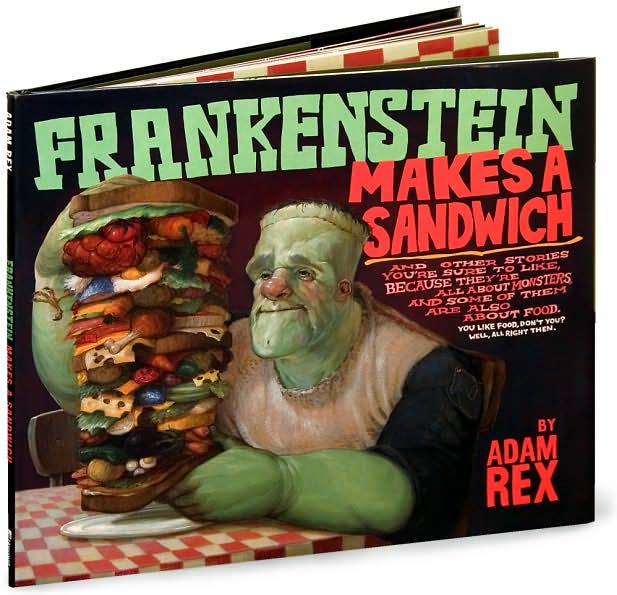
Frankenstein Makes A Sandwich. Adam Rex. 2006. Houghton Mifflin Harcourt. 40 pages.
When Frankenstein
prepared to dine
on ham-and-cheese on wheat,
he found, instead,
he had no bread
(or mustard, cheese, or meat).
What could he do?
He thought it through
until his brain was sore,
And thought he ought
to see what he could
borrow from next door...
In 2008, I read Adam Rex's
Frankenstein Takes The Cake. (It's full title is Frankenstein Takes the Cake Which Is Full of Of Funny Stuff Like Rotting Heads and Giant Gorillas and Zombies Dressed As Little Girls and Edgar Allan Poe. The Book We Mean--Not The Cake.) I loved it. I just LOVED it. I knew there was a previous book, Frankenstein Makes A Sandwich, but it's taken me until now to read it.
The full title of this one? Frankenstein Makes a Sandwich And Other Stories You're Sure to Like Because They're All About Monsters, And Some Of Them Are Also About Food. You Like Food, Don't You? Well, All Right Then.
Even if you're not the world's biggest poetry fan, you should pick up these two by Adam Rex. They're very funny! And they offer a little bit of everything. There's sure to be something that satisfies!!!
I enjoyed following the misadventures of The Phantom of the Opera. The Phantom was being tortured by different songs he couldn't get out of his head... And I also really enjoyed the opening poem "Frankenstein Makes a Sandwich."
© Becky Laney of
Young Readers

Rash by Pete Hautman. Narrated by Andy Paris. 2006. Recorded Books. 6 hrs. 33 minutes.
First sentence:
Gramps, who was born in 1990, once told me that when he was my age the only way to wind up in prison in the USSA (back when it had only one S) was to steal something, kill somebody, or use illegal drugs.
Synopsis:
Consumption of alcohol: Illegal.
Football and other "violent" sports: Illegal.
Ownership of guns, chain saws, and/or large dogs: Illegal.
Body piercings, tattoos: Illegal.
It's late in the twenty-first century, and the United Safer States of America (USSA) has become a nation obsessed with safety. For Bo Marsten, a teenager who grew up in the USSA, it's all good. He knows the harsh laws were created to protect the people. But when Bo's temper flares out of control and he's sentenced to three years of manual labor, he's not so down with the law anymore.
Bo's forced to live and work in a factory in the Canadian tundra. The warden running the place is totally out of his mind, and cares little for his inmates' safety. Bo will have to decide what's worse: a society that locks people up for road rage, or a prison where the wrong move could make you polar bear food.

A few months before I started blogging, I read Pete Hautman's Rash. I loved it
so much that I found myself rereading it a few months later. That was in December of 2006. It took
two posts for me to 'properly' convey my enthusiasm. It's been four years since I first read Rash. That is one of the reasons why I wanted to give Rash a listen this week.
What is it about? It's about a teen guy, Bo, who is in trouble with the law. It is set in the future--in the 2070s, I believe--so
in trouble with the law means something
entirely different. It's a fascinating novel; the little details make it quite a thought-provoking read. The premise being--what would a
safer future look like? But just because this is a premise-driven novel doesn't mean that it isn't a compelling read.
The audio book is narrated by Andy Paris. And I think he did a great job with this one. I loved the voices he did for each character. Especially Bork and Gramps. Unfortunately, the audio book of this one is out of print. And it is not available on audible either.
There were several things I noticed this time around.
- I just now realized that the 'figurative' bear chasing Bo during his track races became all-too-literal once he's imprisoned. And while imagining a bear chasing him helped Bo run a bit faster, it is nothing in comparison to the real thing.
- The emphasis on sports. When I read the book, it was easy for me to not focus on the sports. Hearing the book, it became more difficult for me to ignore the fact that this is very much a boy book, a sports book.
- Just how dysfunctional Bo's family is. The strained relationships between members of his family.
- Thoug







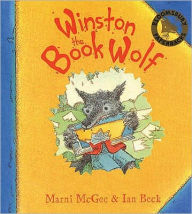
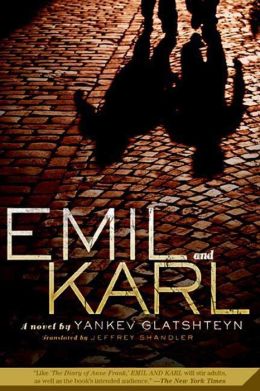
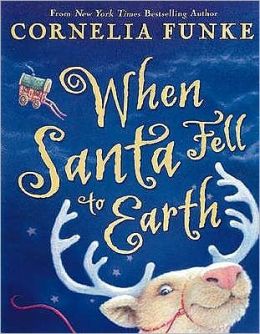
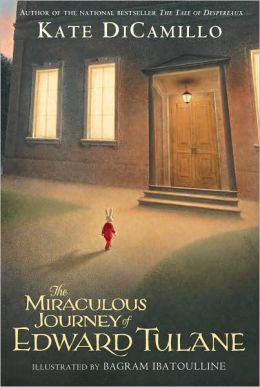


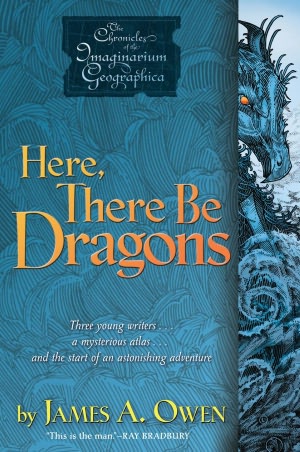


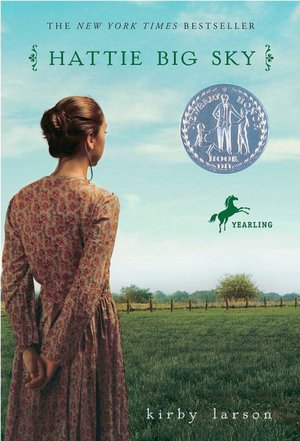
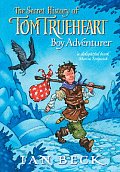
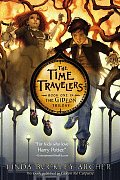


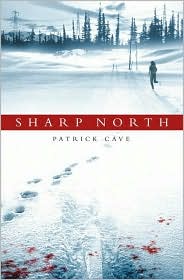







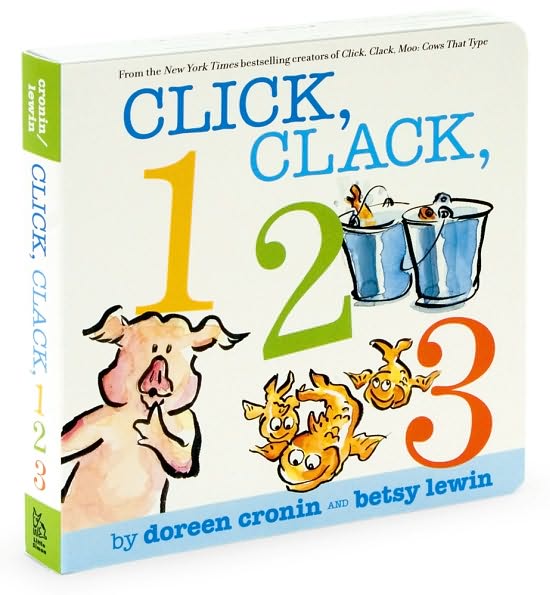
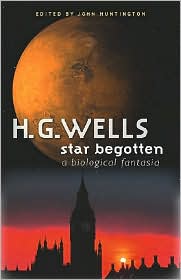


Good day I am so excited I found your web site, I really found you by error,
while I was looking on Aol for something else, Anyways I am here now and would just like to say kudos for a marvelous post and a all round exciting
blog (I also love the theme/design), I don’t have time to browse it all at the minute but I have saved it and also added your RSS feeds,
so when I have time I will be back to read much more, Please do keep up the excellent b.
Stop by my blog post :: Amphora Tobacco